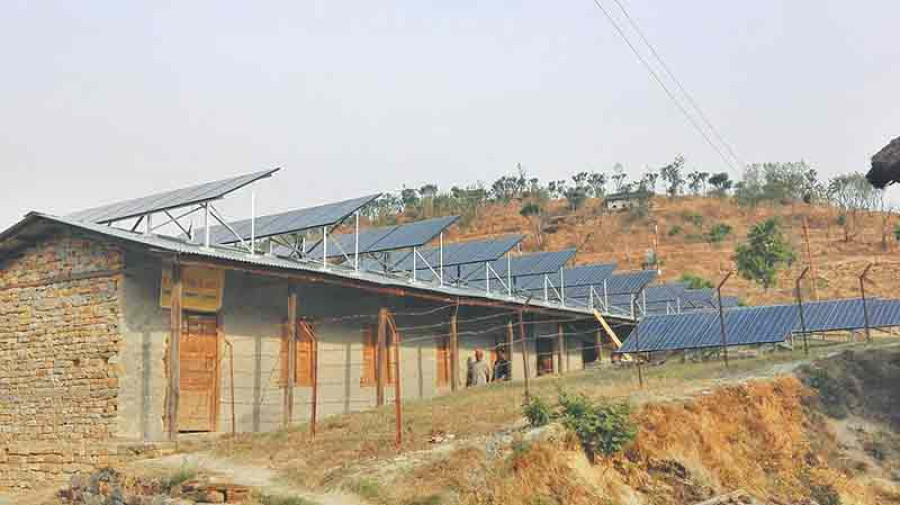Money
Guidelines released on selling energy into grid
There is good news for homeowners who have installed solar panels on their roofs and have surplus energy to sell. The Energy Ministry has issued guidelines on the development of alternative sources of electricity which can be connected to the national grid.
Bibek Subedi
There is good news for homeowners who have installed solar panels on their roofs and have surplus energy to sell. The Energy Ministry has issued guidelines on the
development of alternative sources of electricity which can be connected to the national grid.
As per the Guidelines for Development of Alternative Electricity Connected to Grid 2018, published on February 8, people can feed electricity generated from solar, wind and biogas plants into the national grid, and get paid a fixed amount of money per kilowatt hour of energy.
The guidelines have given special priority to solar energy. Individuals and organizations producing electricity for personal use as well as commercial producers have been permitted to connect their solar panels to the national grid.
The ministry has classified solar plants into three categories based on their installed capacity. Stations producing 500 watts to 10 kilowatts are called domestic producers while plants producing 10 to 500 kilowatts are called organizational producers. Solar energy producers can supply surplus energy to the national grid which will be measured by a net energy meter installed by the Nepal Electricity Authority (NEA), the state-owned power utility.
Similarly, plants with a capacity of more than 500 kilowatts are called commercial projects. Producers have to file an application at the NEA to be permitted to link up with the national grid, and they are required to obtain approval from the Department of Electricity Development before installing such stations, according to the guidelines.
“In case of solar plants with an installed capacity of 1 MW or above, producers have to get a survey licence from the department. They will get a year to complete the survey,” said the guidelines issued by the ministry. The guidelines contain a provision for extending the deadline for the survey by a year if it goes into extra time.
The Energy Ministry, for the first time, has considered connecting electricity produced by wind and biogas plants to the national grid. Electricity producers with wind or biogas plants with an installed capacity up to 1 MW have to file an application at the power utility to connect to the national grid. Owners of plants with an installed capacity of more than 1 MW have to obtain survey and generation licences from the DoED.
The generation licence will have a validity of 25 years, and the NEA will pay producers Rs7.30 per unit. The purchase rate will remain unchanged for three years. After that period, the rate will be increased by 3 percent annually for eight years. Besides launching the new rules, the Energy Ministry has scrapped the Guideline on Grid-Connected Solar Energy Development issued last November.




 9.12°C Kathmandu
9.12°C Kathmandu














